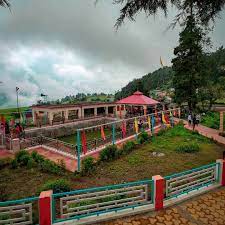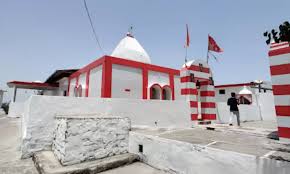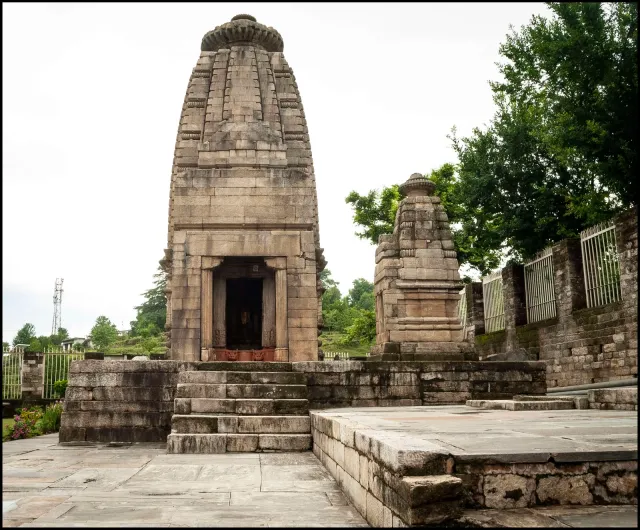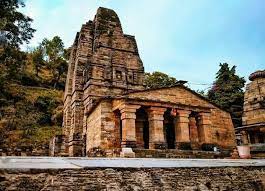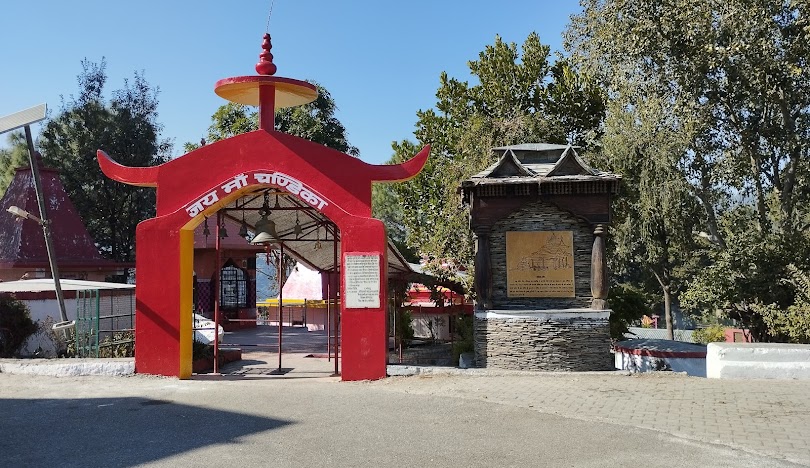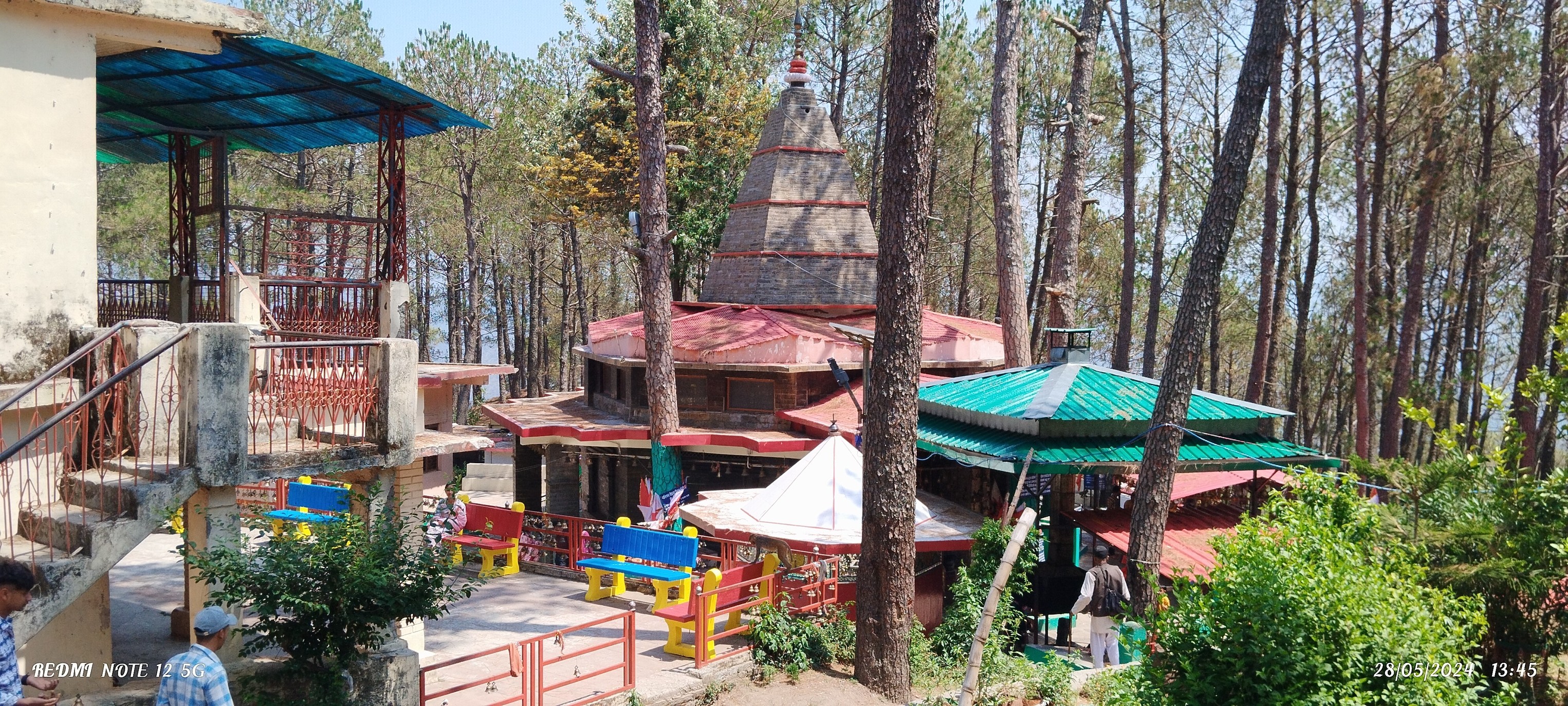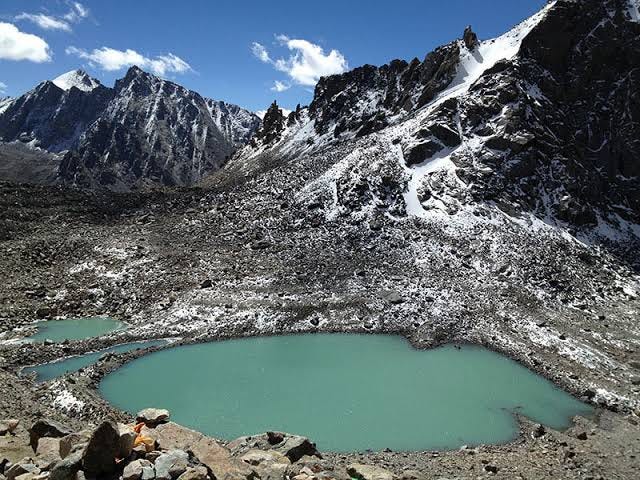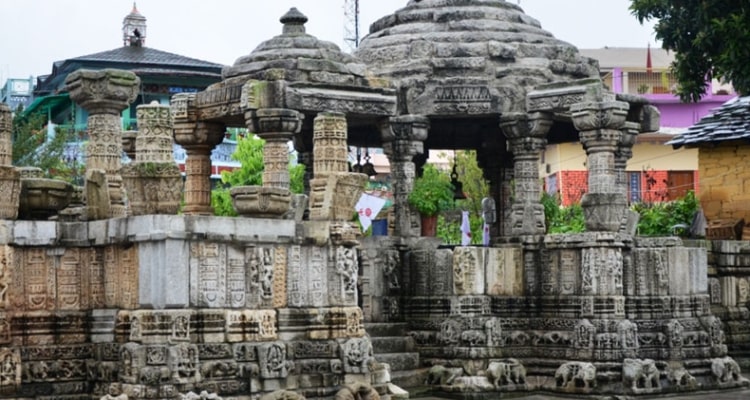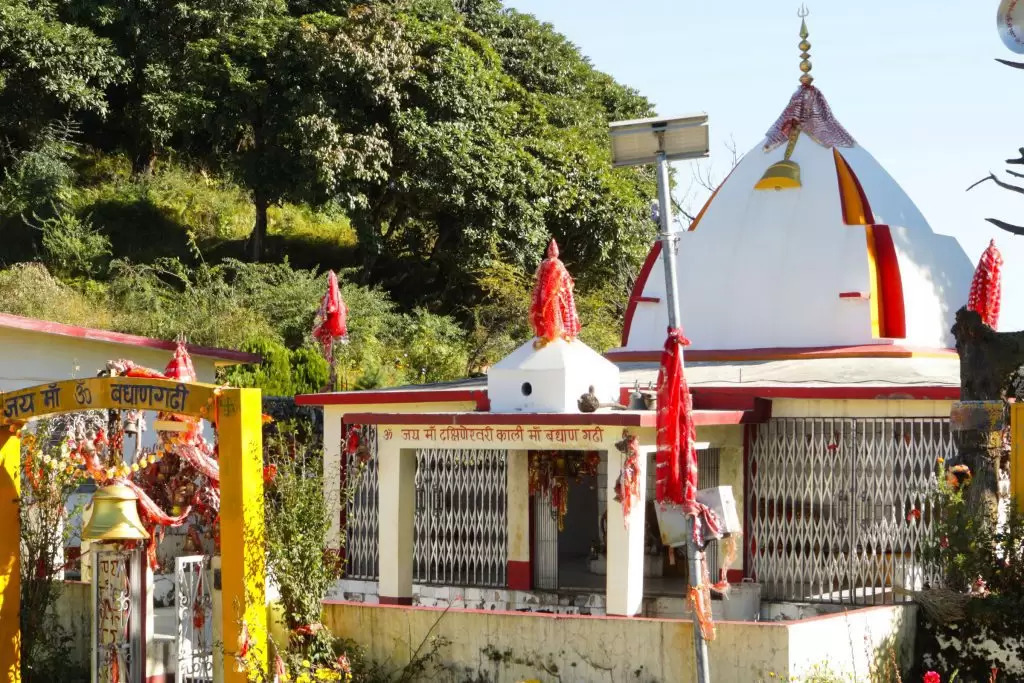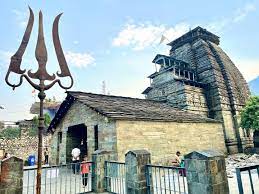In Chamoli, in a village called Bairaskund, there is a place people go when they want more than just views. They go to feel something old, sacred. They go to बैरासकुंड महादेव. A temple of Lord Shiva that lives in myth and moss and early morning mist.
The Legend that Lingers
They say this land belongs to legend. In the त्रेता युग (Treta Yuga), Ravana, king of Lanka, did tapas (deep penance) here. He didn’t just sit quietly. He offered his own heads nine of them one by one, into the हवन कुंड (fire pit), hoping Shiva would notice. On the tenth day, Shiva finally appeared and granted him darshan.
The pond in front of the temple the रावण कुंड is said to hold water that never dries. Villagers say you can still see finger marks on a large rock रावण शक्ति शिला where Ravana is believed to have pressed his palm while praying.
They also say the temple area was called दशौली after “Dasmoli,” the ten places where Ravana placed his heads during the offering.
Morning Puja Like a Breath
If you come before dawn, before birds stretch their wings, you’ll hear the bells around 4 am. That’s when the priest, known locally as Nepali Maharaj, begins puja. Water is poured on the Shivling. The chant “ॐ नमः शिवाय” rises. Smoke from incense drifts out, weaving through deodar trees.
The air is cold. Dew clings to leaves. Light is pinched, then it unfurls like a promise. By 6, the courtyard is full of villagers from nearby, wrapped in shawls, waiting. They bring फूल, milk, and sometimes garlands. No hurry, no spectacle, just devotion in simple acts.
Walk, Stone, Sky
Bairaskund sits near विकास नगर घाट (Vikas Nagar Ghat), off the Badrinath route. To reach it, you travel roads that curve among hills, climb through forests of oak and pine, and cross small streams where water jumps on stones.
The temple is built on a hilltop. You climb steps, some wide, some uneven. Sometimes your foot slips on wet moss. With every step, you look behind you valleys filled with mist, peaks lit by dawn.
When you reach the temple courtyard, the view opens. You see mountains wearing the early light. Clouds drift slowly and heavily. The temple stone looks old and worn. Wood beams darkened by rain. But everything holds with purpose.
Sacred Spaces and Rituals
The temple has a Shivling in the garbha griha (sanctum) that many believe is स्वयंभू not installed by human hand but revealed by time, or by divine will. Devotees place water, बेलपत्र (bael leaves), and flowers. Smoke from धूप (incense) curls upward. Bells ring. Whispered prayers, sometimes tears.
There is also the hawan kund. It is built large and sacred. The pond in front Ravan Kund it gleams in sunlight. Some devotees bathe their hands in it. Others scoop its water in copper lotas for abhisheka (ritual bathing) of the Shivling.
Seasons, Silence, Storm
In सावन, when rain falls often, the place smells of wet stone and moss. Paths get slippery. Clouds crowd the sky. Yet the temple feels alive: chants echo louder because of the damp walls, and plants grow thick around stones.
In winter, snow sometimes dusts the roof. Cold seeps into bones. Few come then. But those who do say the silence is deeper, the devotion sharper, like it burns quietly in cold.
During महाशिवरात्रि, the temple becomes a beacon. Lanterns are lit. A fair is held. Villagers from neighbouring hills come with offerings, children run with sweets, and elders speak of legends under candlelight.
What It Feels Like to Be There
You arrive early, body fresh but lungs tight with cold air. You smell wet earth, pine resin, and incense. You see the orange flame of a lamp flickering in the sanctum.
You see a child’s hand reaching up to touch the Shivling. You see elders folding their hands over their chests. A woman whispers, “माँ पार्वती की कृपा बनी रहे।” A slight breeze carries that sound into the courtyard, makes it linger.
You touch a stone worn by centuries. Moss is cool beneath your fingers. Light jumps past wooden beams. Time stretches.
Why It Matters Even Today
Because myth is not an old story here, it breathes through people. Many believe their wishes came true here. Some couples had wished for children. Farmers wished for rain. The temple’s presence, its rituals, its तपोभूमि (land of penance) quality it encourages hope, humbles fear.
It matters because it connects people villagers born far from big temples. For them, Bairaskund is theirs. Not polished by tourism, not crowded by spectacle. Just faithful remembrance, repeated every morning by small voices.
Visiting Bairaskund Mahadev
- The best time to go is in सावन or during महाशिवरात्रि. The air is charged. Faith is visible everywhere.
- Try to reach before dawn to catch the puja. Light at that hour transforms stone.
- Carry some offerings: फूल, दूध, धूप. Respect the place. Remove shoes. Be quiet.
- Wear warm clothes even summer mornings are cold here. Shoes for grip. Water, some snacks.
What You Take Back
When you leave, you don’t take souvenirs. You take the taste of cold water from the pond. The echo of the bell in the empty courtyard. The weight of dew on your shawl.
You take the image of the hawan kund. The belief that even when you perform offerings one by one, faith can be enough.
You might not remember every carved stone. But you remember the hush. The stillness. The feeling that somewhere between myth and mountain, you touched something sacred.
Closing
Bairaskund Mahadev is not famous on every map. But it is alive in people’s hearts. When myth and nature hug so closely, you feel them both power, awed silence, devotion.
If you ever walk eastward from Nandprayag, go with an open heart. Sit by the pond, listen for bells. Let dawn find you here. And offer yourself, in breath and belief, to the mountain’s hush

